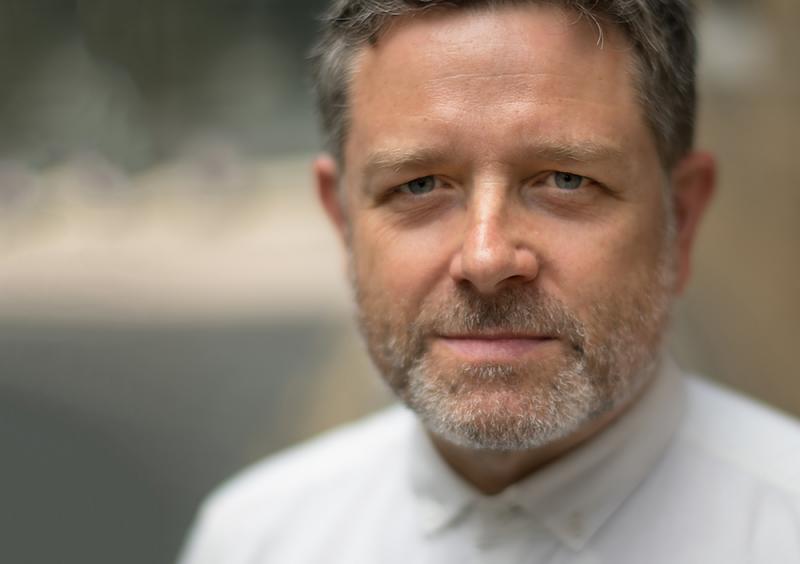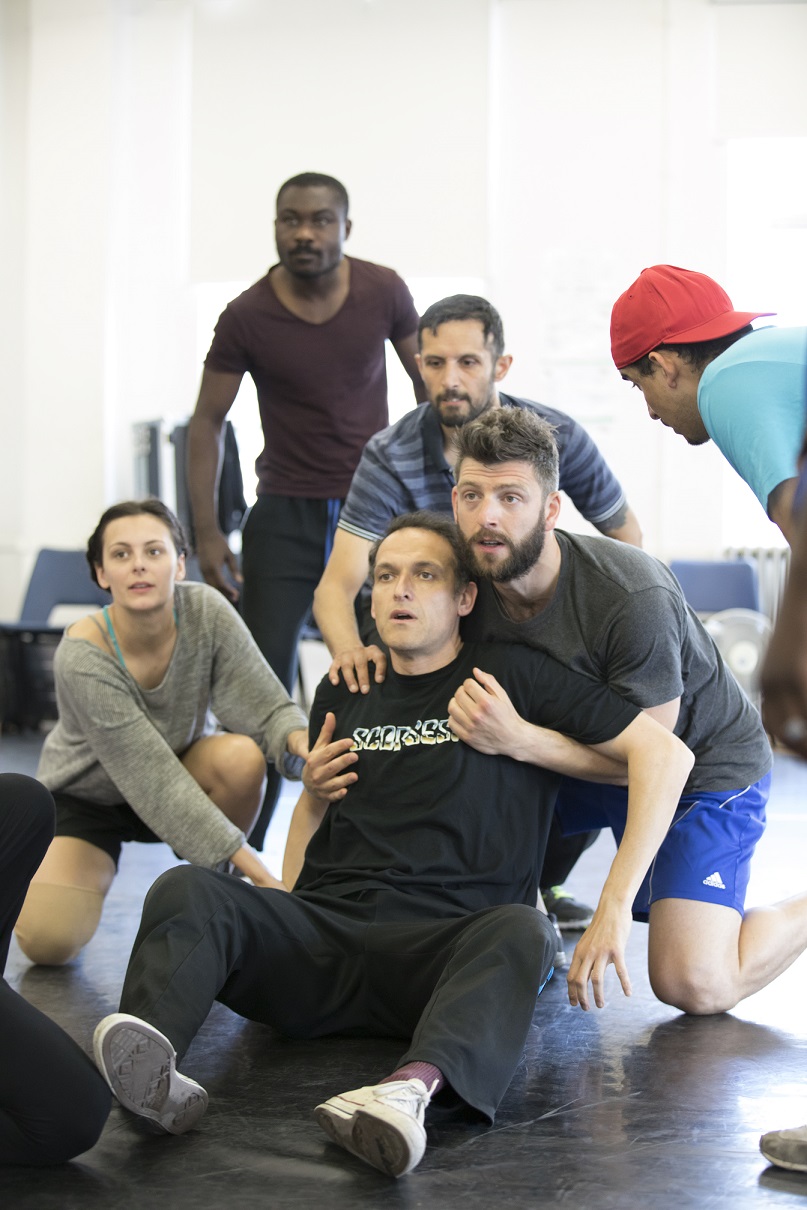Matthew Dunster on adapting 'A Tale of Two Cities' | reviews, news & interviews
Matthew Dunster on adapting 'A Tale of Two Cities'
Matthew Dunster on adapting 'A Tale of Two Cities'
Across the centuries: finding contemporary London in Dickens's French Revolution novel

When you are adapting a novel like A Tale of Two Cities, it's a privilege to sit with a great piece of writing for a considerable amount of time. You also feel secure (and a bit cheeky) in the knowledge that another writer has already done most of the work.
I always have an eye on the final production, whether I'm directing it or not. I want to always be thinking about what theatre and theatre artists can achieve on behalf of the novel. So the adaptations hopefully aren't like dialogue-led plays, more like scores for the theatre.
Tim Sheader, the director, and I, love Dickens. We re-read three novels and Two Cities made its own argument. The argument was its drama and a hunch of, “this feels relevant”. This was in early 2016.
 In Two Cities, Dickens is looking at injustices of the past, written as it was in the middle of the 19th century about the end of the 18th. He knows, however, when we look at the cruelties and injustices of the past, they don't stay there. If, as artists, our antennae are out, we recognise versions of those cruelties, repeats of those injustices and similar scenarios being played out in the present. As it was for those human beings that came before, so it now is for us. And that is shocking.
In Two Cities, Dickens is looking at injustices of the past, written as it was in the middle of the 19th century about the end of the 18th. He knows, however, when we look at the cruelties and injustices of the past, they don't stay there. If, as artists, our antennae are out, we recognise versions of those cruelties, repeats of those injustices and similar scenarios being played out in the present. As it was for those human beings that came before, so it now is for us. And that is shocking.
The novel is a lot about duality: Two countries, two sides of a man, two languages, the best of times, the worst of times etc. What helped me write the play, what unlocked the door I could stagger through, was the idea to make the play about Two Centuries. That this could be a theatrically played out conversation between 21st century Western Europe and Dickens' depiction of the 18th century.
Antennae out, I did a good deal of the work by my mother's bedside in a Salford hospital. I saw the best of the NHS give her a chance of surviving. At times, on other wards, where the stress on resources was visible, in what felt like a broken and underfunded health system – I suspect that she wasn't properly looked after and that that perhaps shortened her life. The pain I was experiencing, and the subsequent grief, are all over the choices made in adapting the novel – a novel that concentrates its pain into the exploration of three families, the Manettes, the Defarges and the Evremondes. (Rehearsal image above by Johan Persson)
A few weeks before my mum died – Britain voted to leave the EU. Our isolation from the continent loomed. The vote revealed a large part of the British population that can no longer see giving refuge to others as a source of pride. The Britain of Refuge is celebrated in A Tale of Two Cities. Our complicated relationship with America is also mentioned in the novel – at that time the brave young colony had struck for independence. In our own time, America further fed our preoccupations, as last November an angry, disenchanted population voted for a president who would make the movement of people and the protection of those with need of refuge much less likely.
Dickens also offers us a version of the future
When it came to casting we met actors who have escaped the countries they were born in and sought refuge in ours. We met other actors who were immigrants, children of immigrants and working-class British. These were the people we wanted to tell Dicken's story, and meet it with their own.
Dickens was writing about an explosion that is inevitable when people are so brutally oppressed. He then writes about the carnage and violence when the revolutionaries turn their new-found power into the terror fed by revenge.
Our rehearsals started and sadly we didn't need to work hard at all for the world to make its way into our rehearsal room. The relevance of Dicken’s novel was thrown into the sharpest relief by the terrorist attacks in Manchester, on London Bridge and in Finsbury Park. Then there was Grenfell, a tragedy that perhaps could've been avoided if the lives of the poorest members of our society were valued differently. Labour politicians name-checked A Tale of Two Cities, and there was a feeling of angry revolt in the protests on our streets and inside and outside council and government buildings. Our cast are Londoners and know the London of the Grenfell residents. They were deeply affected and wanted to bring their feelings and experiences into the work.
Dickens also offers us a version of the future. He does so with a vision of a Britain that takes in a family of refugees and allows them to prosper in safety. In rehearsals this has saddened us and moved us more than anything because we can't share his certainty; but it has also given us, within our own cause, a cause for hope.
- A Tale of Two Cities by Matthew Dunster is at Regent's Park Open Air Theatre from 7 July to 5 August
- Read more First Person features on theartsdesk
Share this article
The future of Arts Journalism
You can stop theartsdesk.com closing!
We urgently need financing to survive. Our fundraising drive has thus far raised £49,000 but we need to reach £100,000 or we will be forced to close. Please contribute here: https://gofund.me/c3f6033d
And if you can forward this information to anyone who might assist, we’d be grateful.

Subscribe to theartsdesk.com
Thank you for continuing to read our work on theartsdesk.com. For unlimited access to every article in its entirety, including our archive of more than 15,000 pieces, we're asking for £5 per month or £40 per year. We feel it's a very good deal, and hope you do too.
To take a subscription now simply click here.
And if you're looking for that extra gift for a friend or family member, why not treat them to a theartsdesk.com gift subscription?
more Theatre
 Troilus and Cressida, Globe Theatre review - a 'problem play' with added problems
Raucous and carnivalesque, but also ugly and incomprehensible
Troilus and Cressida, Globe Theatre review - a 'problem play' with added problems
Raucous and carnivalesque, but also ugly and incomprehensible
 Clarkston, Trafalgar Theatre review - two lads on a road to nowhere
Netflix star, Joe Locke, is the selling point of a production that needs one
Clarkston, Trafalgar Theatre review - two lads on a road to nowhere
Netflix star, Joe Locke, is the selling point of a production that needs one
 Ghost Stories, Peacock Theatre review - spirited staging but short on scares
Impressive spectacle saves an ageing show in an unsuitable venue
Ghost Stories, Peacock Theatre review - spirited staging but short on scares
Impressive spectacle saves an ageing show in an unsuitable venue
 Hamlet, National Theatre review - turning tragedy to comedy is no joke
Hiran Abeyeskera’s childlike prince falls flat in a mixed production
Hamlet, National Theatre review - turning tragedy to comedy is no joke
Hiran Abeyeskera’s childlike prince falls flat in a mixed production
 Rohtko, Barbican review - postmodern meditation on fake and authentic art is less than the sum of its parts
Łukasz Twarkowski's production dazzles without illuminating
Rohtko, Barbican review - postmodern meditation on fake and authentic art is less than the sum of its parts
Łukasz Twarkowski's production dazzles without illuminating
 Lee, Park Theatre review - Lee Krasner looks back on her life as an artist
Informative and interesting, the play's format limits its potential
Lee, Park Theatre review - Lee Krasner looks back on her life as an artist
Informative and interesting, the play's format limits its potential
 Measure for Measure, RSC, Stratford review - 'problem play' has no problem with relevance
Shakespeare, in this adaptation, is at his most perceptive
Measure for Measure, RSC, Stratford review - 'problem play' has no problem with relevance
Shakespeare, in this adaptation, is at his most perceptive
 The Importance of Being Earnest, Noël Coward Theatre review - dazzling and delightful queer fest
West End transfer of National Theatre hit stars Stephen Fry and Olly Alexander
The Importance of Being Earnest, Noël Coward Theatre review - dazzling and delightful queer fest
West End transfer of National Theatre hit stars Stephen Fry and Olly Alexander
 Get Down Tonight, Charing Cross Theatre review - glitz and hits from the 70s
If you love the songs of KC and the Sunshine Band, Please Do Go!
Get Down Tonight, Charing Cross Theatre review - glitz and hits from the 70s
If you love the songs of KC and the Sunshine Band, Please Do Go!
 Punch, Apollo Theatre review - powerful play about the strength of redemption
James Graham's play transfixes the audience at every stage
Punch, Apollo Theatre review - powerful play about the strength of redemption
James Graham's play transfixes the audience at every stage
 The Billionaire Inside Your Head, Hampstead Theatre review - a map of a man with OCD
Will Lord's promising debut burdens a fine cast with too much dialogue
The Billionaire Inside Your Head, Hampstead Theatre review - a map of a man with OCD
Will Lord's promising debut burdens a fine cast with too much dialogue

Add comment